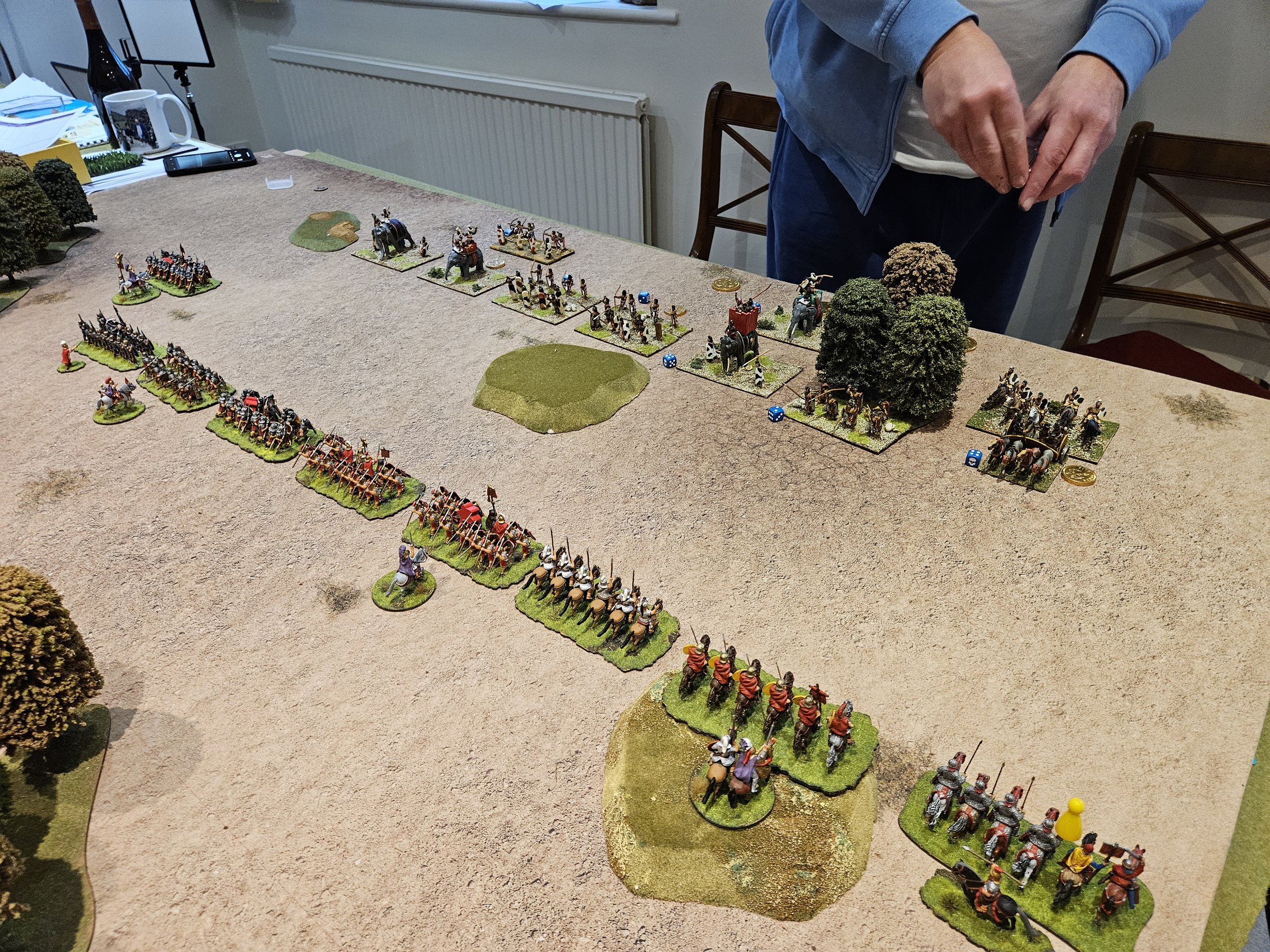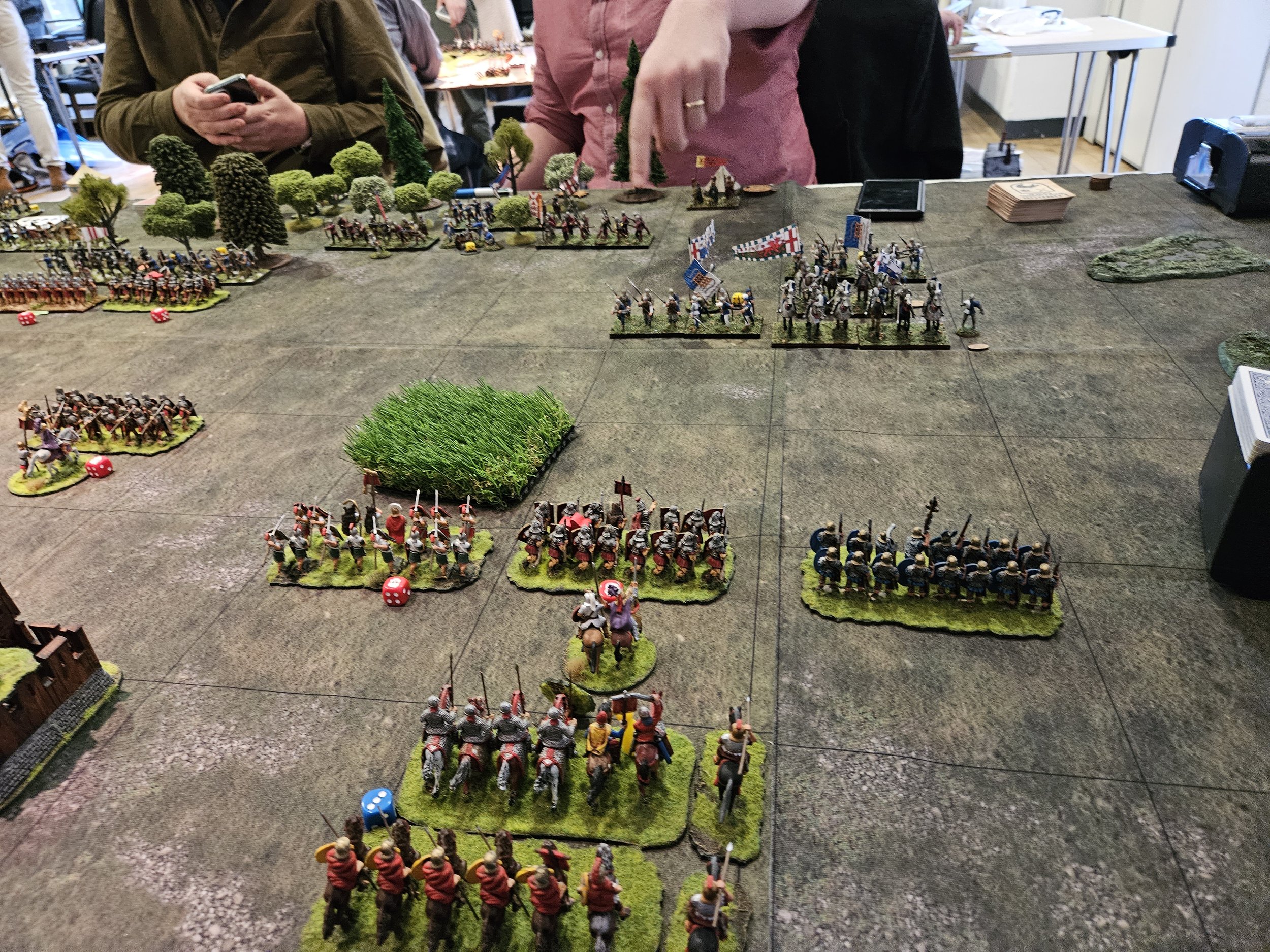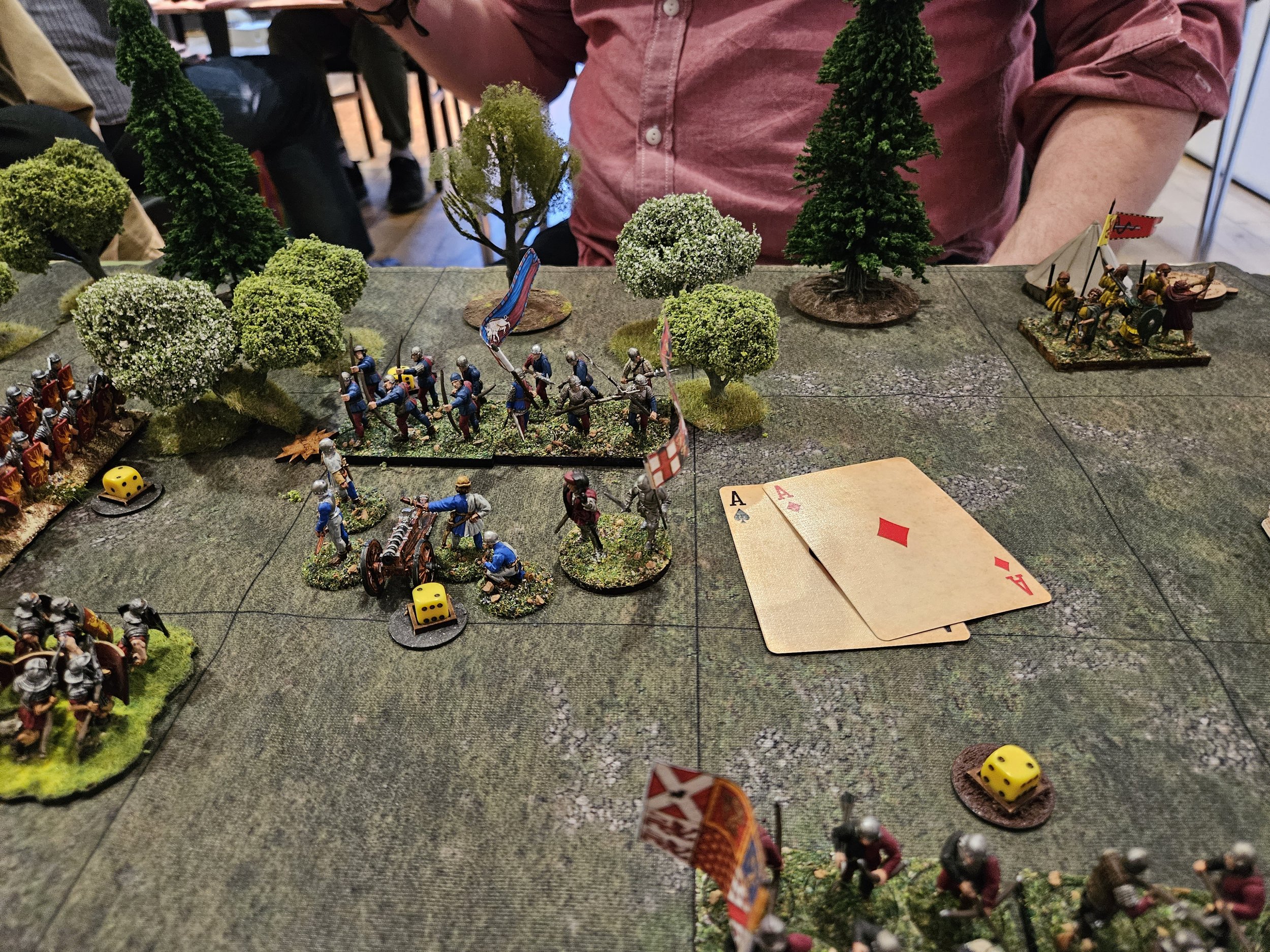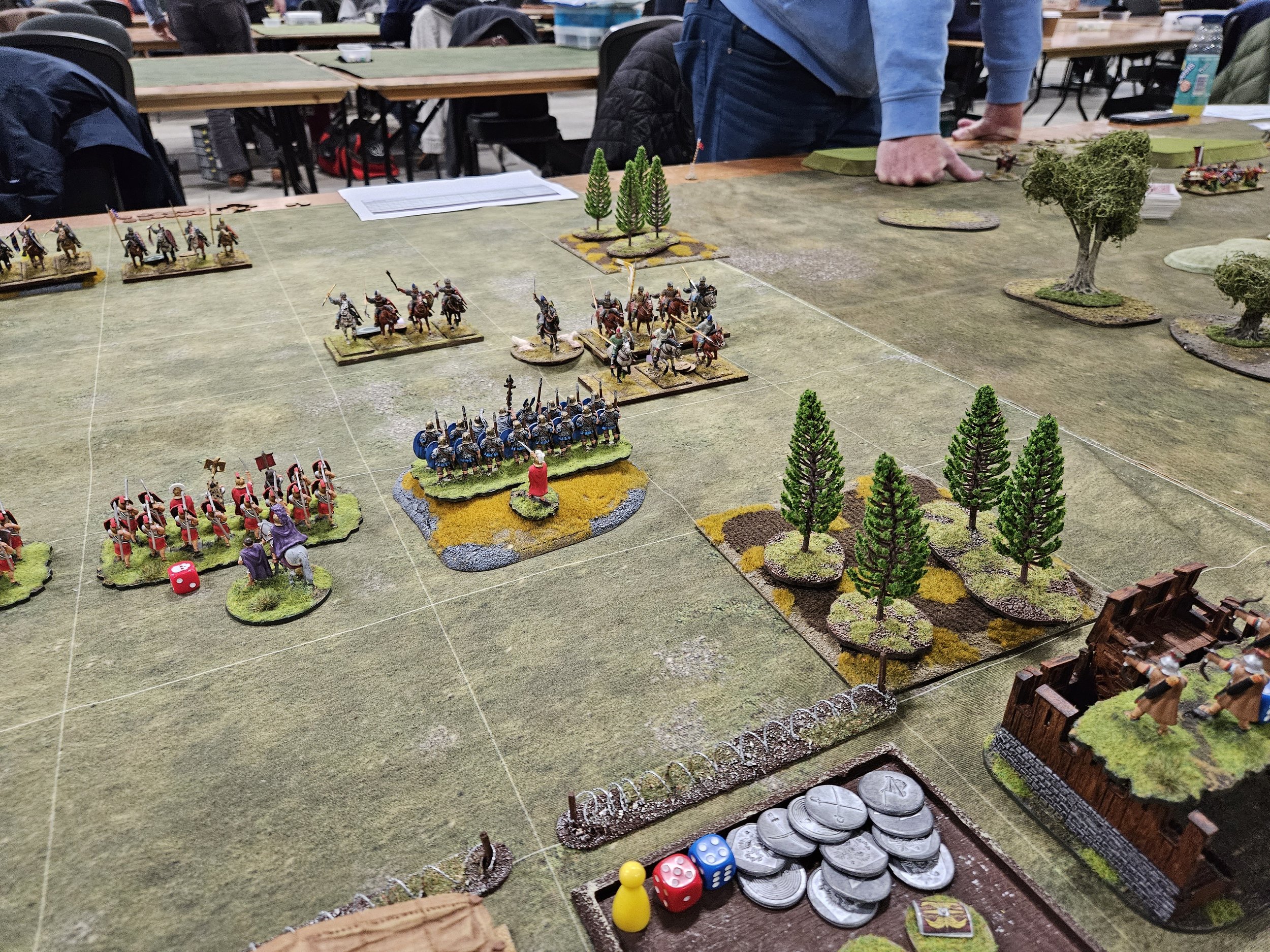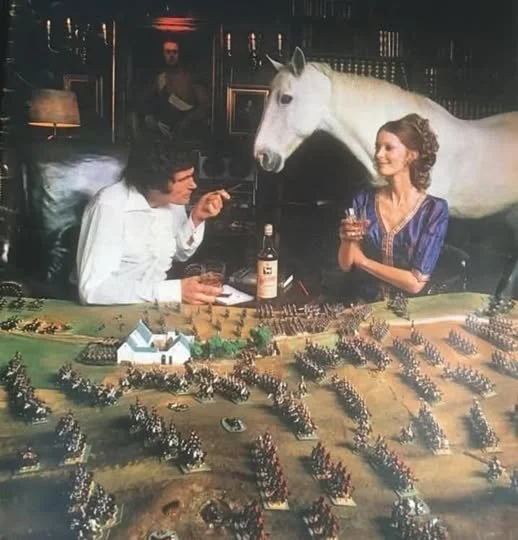TTS World Championships 2024: Game 1: Venetians vs Sengoku Samurai
/This year’s To The Strongest World Championships was held at Blewberry in Oxfordshire. It was a superbly organised event that all who took part agreed was good fun.
My first opponent was Colin and his Sengoku Samurai: a nasty combination of Samurai types,both mounted and dismounted, with their longbows and naginata two-handed cutting weapons, and Ashigaru Teppo mixture of spearmen, bowmen and musketeers. This was not going to be easy!
Fortunately I won the deployment, and watched as Colin set up his troops crowded on to the left hand side of the battlefield.
This gave me an excellent opportunity (helped by a suitable stratagem card) to get on to his left flank, and that’s exactly what I did:
Unfortunately, however, his corner unit of veteran Samurai proved tough as old boots (or whatever the Japanese equivalent is) and, to make matters worse, my pike block took not one but two surprising hits from missile fire.
Meanwhile, the rest of my troops had got stuck in to the Japanese main line, with my left hand unit of Knights also managing to see off one unit of Samurai horse and threaten the flank of another.
With my troops now fully committed, it was time to turn from Athena to Mars and hope that my troops were up to the task:
As you can see, although the Samurai centra began to give way, the remaining Samurai horse on the left wing proved very resilient despite the cards giving me every opportunity to best them!
Fortunately most of my frontline troops were Later Knights, and quality began to tell. More and more of Colin’s units were either sent fleeing the field or forced to retreat into his camp, and eventually victory was mine.
A good start to the competition with a 13-1 victory.
























